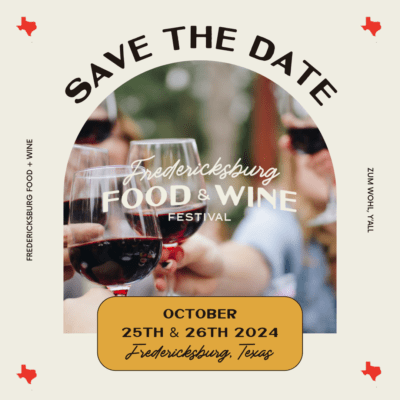
In advance of the 2024 Fredericksburg Food & Wine Festival, the Fredericksburg Chamber of Commerce has released the official schedule of events for the first-ever ‘Preview Week,’ slated to take place from July 22nd – July 28th, 2024. Tickets are going on sale – click here.
An opportunity for culture lovers to get a sneak peek of what’s to come for the revamped Fredericksburg Food & Wine Festival this fall, Preview Week is steeped in interactive and immersive experiences that celebrate local culinary arts and beverages.

The Preview Week kicks off with a free, family-friendly exploration of local farms. On Tuesday, the Women for WineSense host “Taste of Texas,” featuring South American bites alongside Texas Hill Country wines at El Quincho. Wednesday’s “Tacos & Tannat” at Augusta Vin pairs local tacos with three Tannat wine expressions. Thursday’s “Sip Into Summer Garden Cocktails 101” at Hill Country Herb Garden offers cocktail-making demonstrations. Friday’s “Elk & Main Sip & Savor” includes a progressive tasting with champagne, Italian tapas, and chocolate. Saturday starts with “The Elephant in the Room Boozy Brunch” at The Albert Hotel, followed by a queso cook-off at Milam’s Grand Central.
Tickets for all events can be purchased online here and a press release with more information can be found here.
— — — — —

Be the first to comment